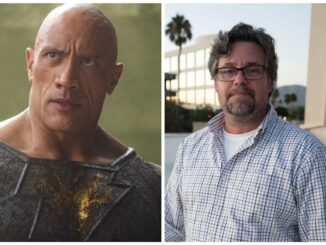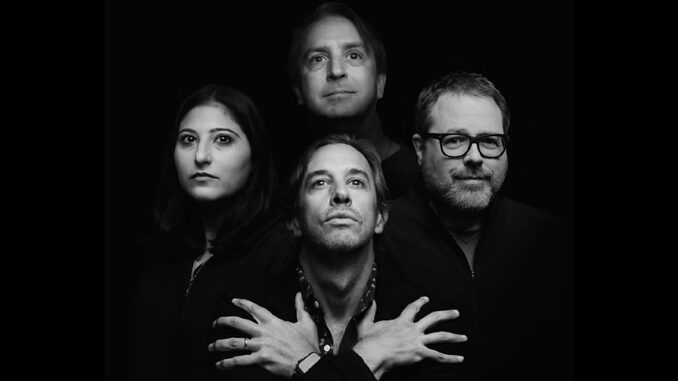
By Peter Tonguette
None of the picture editors on the Marvel Studios series “WandaVision” actually worked on classic American sitcoms from the 1950s, ’60s, ’70s, or ’80s. None have credits on “I Love Lucy,” “The Dick Van Dyke Show,” “The Brady Bunch,” or “Family Ties.” Yet, in working on the nine-episode series created by head writer and executive producer Jac Schaeffer, each of the editors got a taste of what it was like to edit those immortal situation comedies.
An altogether unique entrant into the Marvel Cinematic Universe, “WandaVision” deposits a pair of iconic characters — Wanda Maximoff, aka the Scarlet Witch (played by Elizabeth Olsen), and her significant other, the android Vision (Paul Bettany) — into a world that, depending on the episode, resembles homey sitcoms from the 1950s through the turn of the millennium. From costume to set design to cinematography, the aesthetics of each sitcom era were artfully reproduced. That fidelity extended to the work of the postproduction team, who sought to evoke the distinctive editorial rhythms and sound mixing of old sitcoms.
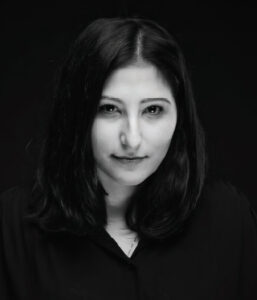
“We were trying to support Wanda’s emotional journey through the different eras,” said Zene Baker, ACE, who — along with Tim Roche, ACE, Nona Khodai, ACE, and Michael A. Webber — was one of four picture editors to work on the series. “She’s discovering things about herself in each episode.”
The result? The picture and sound editors crammed several decades’ worth of references to the Golden Age of Television into the series, which premiered, to critical acclaim and high audience interest, in January on Disney+.
“‘WandaVision’ was conceived as an intricate pastiche of TV comedy and big-screen action and, as such, the tone was a high-wire act,” Schaeffer told CineMontage. “Our postproduction team understood and enhanced each switchback and left turn of the show. The picture and sound editing team’s excellence shines through every joke, jump scare, and heartbreaking clinch.”
Before the team even entered their real-life (and then virtual) cutting rooms, though, they had to hit the books — which, in this case, meant hitting the re-runs. After all, evoking old sitcoms required rewatching, well, a lot of old sitcoms.
“We watched a bunch — we watched from ‘Bewitched’ to ‘Dick Van Dyke,’” said Roche, who edited Episodes 1, 4, and 7. Absorbing the style of those and other old shows, the editor trained himself to hold shots that, in most modern-day comedies, would be shortened or scrapped in favor of singles or close-ups.
My job is to get out of the way and not to be noticed.
“The big difference is that a lot of the jokes happened in two-shots and three-shots,” said Roche, who, in his desire to let jokes land without editorial intervention, compared his role to that of a catcher in a baseball game. “My job is to get out of the way and not to be noticed. The only time you notice a catcher in baseball is when they’re bad.”
As Khodai sees it, many of the sitcoms that influenced “WandaVision” had the cadence and pacing of stage plays. “‘I Love Lucy’ is so much more fast-paced than, say, comedies today,” said Khodai, who edited Episodes 3, 5, and 8. “Those actors prepped, maybe more, I think, than we have time for today.” In fact, to add to the authenticity, the “Lucy”-inspired Episode 1 was produced in the presence of a live studio audience; subsequent episodes made use of laugh tracks as needed.
The discipline to let a scene play sometimes cut against the editors’ grain.
On one early episode, said first assistant editor Webber, “we kind of went with what your standard belief would be of how to cut it.” Soon enough, Webber, who shared co-editing duties with Baker on the series finale, realized that the material was telling the crew to slow down. “You actually just have to let this play out in a two-shot and let it go for a while,” Webber said. “And then you maybe punch in for the joke and then pull back out again.” (Baker also edited Episodes 2 and 6.)
You’d have to figure out how to make both the old sitcoms and the Marvel universe feel real.

As Wanda and Vision’s television limbo advances in time, the specific sitcoms referenced — and editorial styles used — changed. In contrast with the two-shots and three-shots preferred in the earliest episodes, by the time the series was referencing “The Brady Bunch,” close-ups enter the picture. “If you look back, they did a little bit more of the cutting back and forth, more so than the earlier sitcoms,” said Khodai, who noted that, by the time of “Family Ties,” wider angles were back in fashion. “When you go into the ’80s, they actually stayed more wide,” she said. “With ‘Family Ties,’ they would stay in the family shots that everyone was in.”
Yet the editors wanted to avoid becoming too precious about imitating vintage sitcom styles, especially when the larger Marvel Cinematic Universe, or MCU, begins to intrude on Wanda and Vision. Webber emphasized a need for cohesion between sitcom scenes and MCU material. “You’d have to sit there and figure out a way where both would feel real within the realm of the entire episode,” he said.
Scene-swapping was sometimes necessary. “Sometimes, if you put two scenes together that were from MCU and sitcom, they just didn’t work together,” added Roche, who would sometimes insert a faux commercial break to give the audience a breather between the two worlds. “Sometimes bumping up against an MCU scene didn’t always work particularly well, so we had to find creative ways to make all that mesh.”
Postproduction on “WandaVision” began in November 2019, when the show was being shot in Atlanta, Georgia. When the coronavirus pandemic began a few months later, production halted for a period of time before resuming in Los Angeles, but Marvel Studios’ long-simmering plans for remote work in post suddenly took on a new urgency. “There was the idea at some point at Marvel that there would be remote systems maybe a year and a half from now,” Roche said. “Then they just had to expedite that in four weeks. We were as beta-tested as you can get in terms of: ‘Let’s try this platform; let’s try these devices.”
Although there were technical hiccups in syncing each editors’ at-home systems, the picture editors agree that the process had certain advantages, particularly in balancing life and work. “You had the ability, … even though we might be [working] until 10, 11, 12 o’clock at night, to step away at 7 o’clock and have dinner with your family, which has never happened in my life,” Webber said. “It allowed for the craziness, but also allowed for a healthy home life.”
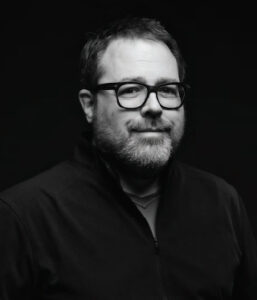
For “WandaVision” to work, audiences not only had to become invested in what they were seeing but also what they were hearing. Sound designer Steve Orlando was as diligent as the picture editors in recreating old sitcoms. “The exciting thing about this show was it was a chance, at least at first, to go in a different direction from past Marvel films,” Orlando said. “Since the show was sort of a love letter to sitcoms, I also tried to base a lot of sounds on TV static and noises or switches whenever possible, especially the Hex.”
Like the picture editors, supervising sound editors Kim Foscato, Matthew Wood, and Gwendolyn Yates Whittle, MPSE, closely scrutinized classic sitcoms. In re-watching “Bewitched” and “The Dick Van Dyke Show,” Whittle was struck by how sparse the soundtracks were. “There’s no Foley — they all floated,” Whittle said. “You never heard their feet. It was just much simpler than what we expect from TV now. You expect it to be fuller; you expect it to sound much more like a feature film.”
I’m a kid of the ’60s. It was ‘The Dick Van Dyke Show,’ Lucille Ball’s show, and all of those shows that you would see on re-runs that were just constant.
Seeking to honor those sitcoms’ sonic style, the team created a sound world that was initially quite limited: mono tracks were used for early episodes, with stereo reserved for MCU scenes. “It was really interesting to see how [the sound] expanded and grew with Wanda’s vision of how life is changing with these different television shows that she had grown up with,” Foscato said. “You have those mono shows at the beginning, and then it was widened.” The bare-bones mono tracks could be unforgiving. “You can hear all of the inconsistences in dialogue that we, as dialogue editors, work really hard to get rid of,” Foscato said. “Of course, once we popped into the Marvel universe, I don’t think that you could be that extreme going back and forth. By Episode 4, we started to see the cracks and see going into the Marvel universe and now it’s starting to get a lot . . . bigger of a soundtrack.”
Like the picture editors, the bulk of the sound editing crew worked remotely. Re-recording mixer Danielle Dupre ontinued to work on site in a room in which only one additional person was permitted; eventually, that changed and no one else was allowed to work with Dupre in-person. “In the beginning, I’d go up for playbacks, just to make sure I was hearing what she was hearing,” Whittle said. “That was sort of the biggest wild card in the whole pandemic, work-from-home thing: I have my setup at home, and I know what it sounds like, but I have no idea what Kim’s sounds like, I have no idea what anybody else’s sounds like.”
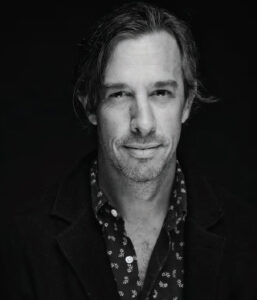
Yet there were advantages to listening to the mix in less-than-ideal circumstances. “I think having to do some reviews on headphones really helped the mix, actually,” Orlando said. “Most people listen to stuff in stereo still and a lot on headphones. It informed the mix and sounds I would cut so things would play better on smaller speakers.”
Despite the challenges of working from home, Webber praises Marvel Studios for assembling a winning team and allowing them to think creatively while bringing to life a show that was, in effect, several shows rolled into one.
“We’re blessed that Marvel knows how to put a very good crew together,” Webber said. “They trust the editorial staff implicitly with what they do, and it’s not often that a studio will do that and let creative people be creative.”
A lot of people look at Marvel and they go, ‘Oh my God, it’s comic books. I’m not into comic books.’’
And, while “WandaVision” is firmly entrenched in the Marvel Cinematic Universe, the editors say that an encyclopedic knowledge of the MCU is not required to enjoy the show. “It does stand on its own, and you don’t need to know the Marvel lore to really understand the emotional journey of these characters,” Roche said. “Anybody can watch this; anybody can relate to it.”
Though it helps if you’ve seen a re-run or two of one of those classic sitcoms of decades gone by.
“A lot of people look at Marvel and they go, ‘Oh my God, it’s comic books. I’m not into comic books,” Foscato said. “I’m a kid of the ’60s. It was ‘The Dick Van Dyke Show,’ Lucille Ball’s show, and all of those shows that you would see on re-runs that were just constant. There was no cable TV, so that’s what we got to watch. It was really fun to kind of go through the ages.”



